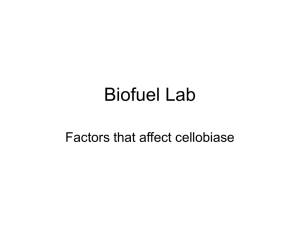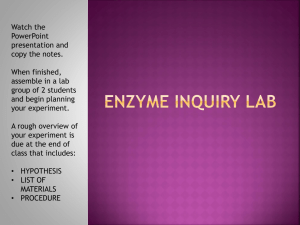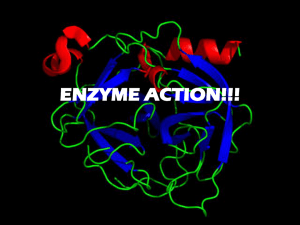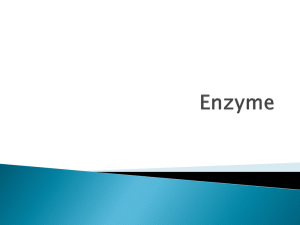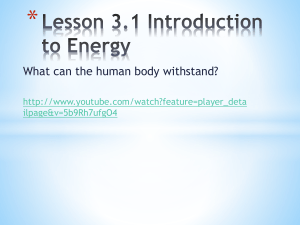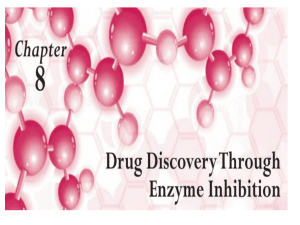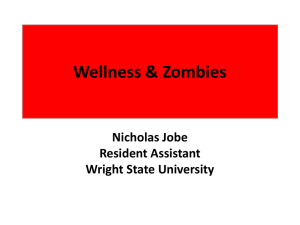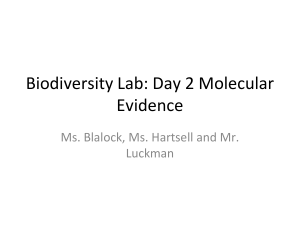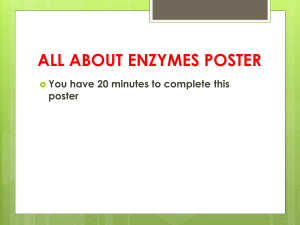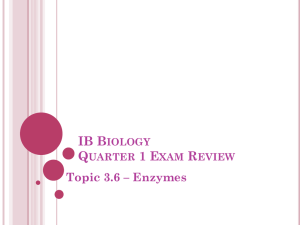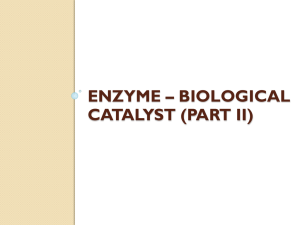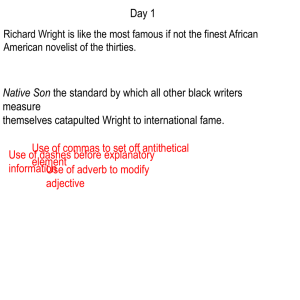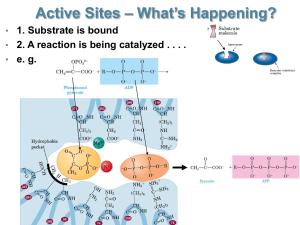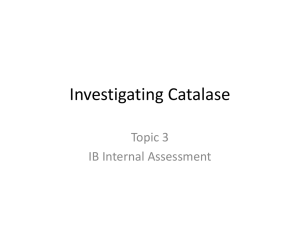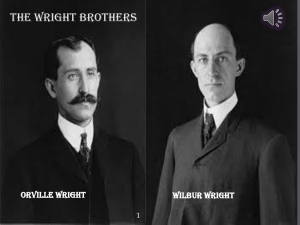Enzymes - Snab Online
advertisement
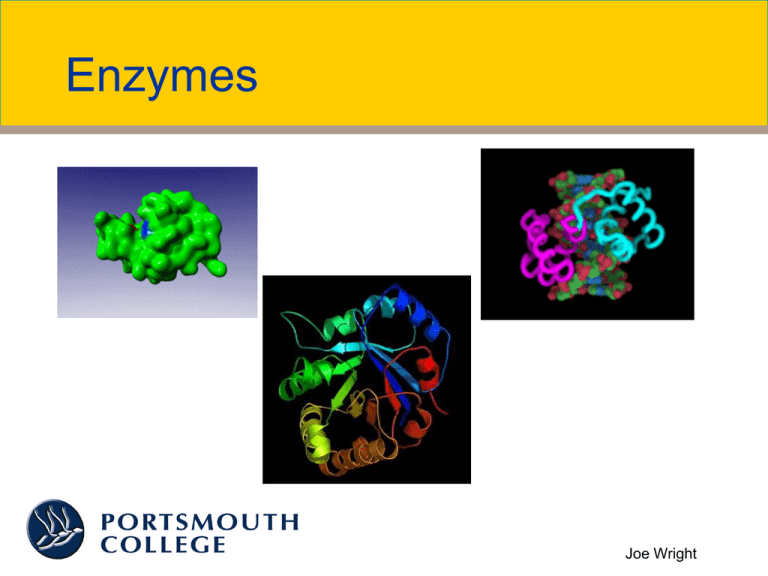
Enzymes Joe Wright What are Enzymes? • • • • • • Globular proteins Biological catalysts Do not change after reaction They are found in small quantities Specific Reactions are reversible Joe Wright How Enzymes Work • Enzymes lower the energy required for a chemical reaction to occur (activation energy) Joe Wright How Enzymes Work Joe Wright Enzyme Structure • Tertiary Structure of enzyme determines its unique shape. • Forms its ACTIVE SITE Active Site Joe Wright Enzyme Action • Enzymes work on specific substrates • Substrate(s) has to fit in the active site • Lock and key hypothesis Substrate Products Active site Enzyme Enzyme / Substrate Complex Enzyme unchanged Joe Wright Enzyme Action • Active site is sometimes flexible • When substrate(s) enter active site enzyme changes shape • Induced Fit Theory Product Substrates Active site Enzyme Enzyme / Substrate Complex Enzyme unchanged Joe Wright Enzyme Action • Rate of an enzyme reaction can be affected by: – Temperature – pH – Enzyme Concentration – Substrate Concentration Joe Wright Monitoring Enzyme Action • In an experiment enzyme action can be timed by: Formation of Products e.g. gas Disappearance of Substrate e.g. starch Joe Wright Enzyme Activity and Temperature Joe Wright Enzyme Activity and pH Joe Wright Enzyme Activity and Substrate Concentration Joe Wright Enzyme Activity and Enzyme Concentration Joe Wright What to do now • Read Key Biological Principle box page 77-79 • Answer Checkpoints 2.3 and 2.4 Joe Wright


